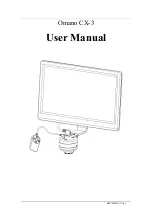
4 PRINCIPLE OF OPERATIONS
9070
4
PRINCIPLE OF OPERATIONS
4.1 SENSOR UNIT
4.1.1 A flow schematic is shown in Fig. 4.1.
The sample enters the compression fitting at the bottom of the case and passes
through one half of a heat exchanger. This heat exchanger, used during the
calibration sequence to bring the standard solution temperature close to the
temperature of the sample solution, minimizes calibration time.
FIGURE 4.1 SCHEMATIC FLOW DIAGRAM
From the heat exchanger, the sample passes through a solenoid valve to the
constant head unit. Here, the head unit stabilizes the effect of changes in
sample pressure and flow rate. When the monitor loses sample, a small tube
overflowing into the constant head on one side ensures a self-start. This tube
also permits the monitor to function over a wide range of sample flow rates.
The sample is then delivered to the Entrainment “T” and stainless steel
entrainment tube. An alkaline vapor Buffer is added to the sample to raise its
pH value before flowing through the hydrazine sensor. The sample leaves the
sensor and drips into the drain at the bottom of the case.
The signal from the electrode pair travels to a junction box and hence, to the
transmitter unit via the interconnection cable.
14
















































